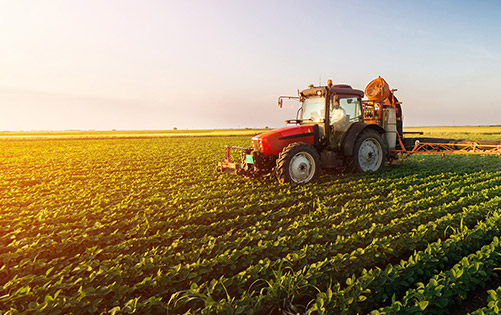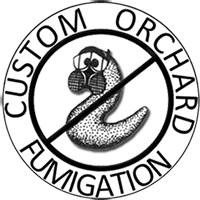
Soil fumigation is an essential agricultural process used to control pests, pathogens, nematodes, and weeds that compromise crop health and yields. While highly effective, soil fumigants are among the most tightly regulated pesticides due to their potential to drift, affect air quality, and pose risks to people nearby. Ensuring worker protection and minimizing soil fumigant exposure risk requires a clear understanding of regulatory requirements, fumigant label safety measures, and science-backed safety practices. Farmers, applicators, and agricultural managers must take proactive steps not only to safeguard workers but also to protect neighbors and surrounding communities.
This article explores the most important safety measures, regulatory requirements, and best practices that define responsible soil fumigation today.
Understanding Soil Fumigant Exposure Risk
Soil fumigants are volatile chemicals designed to diffuse through the soil and eliminate pests that cannot be controlled by surface-applied pesticides. The very properties that make these fumigants effective also make them hazardous if mismanaged. Vapors can escape into the atmosphere and drift away from the treatment site, potentially reaching workers, bystanders, and neighboring residences.
Exposure risks depend on multiple factors, including application methods, weather conditions, soil characteristics, and the fumigant itself. Acute exposure can lead to respiratory irritation, headaches, nausea, or more serious health effects depending on the concentration. Chronic exposure, though less common due to strict controls, could contribute to longer-term health concerns.
Risk is particularly high during and immediately after application, making the presence of trained applicators, proper protective equipment, and well-implemented safety practices essential. Addressing these risks requires both compliance with fumigant label safety measures and the thoughtful application of site-specific risk-reduction strategies.
Fumigant Label Safety Measures and Regulatory Framework
Every soil fumigant is governed by a detailed label that outlines specific safety practices, application techniques, and restrictions. These fumigant label safety measures are legally enforceable and represent the foundation of worker protection and community safety.
Label requirements typically include worker training, application timing restrictions, buffer zones requirements, protective equipment mandates, and emergency preparedness measures. The U.S. Environmental Protection Agency (EPA), alongside state regulatory agencies, enforces these provisions to ensure consistency in application standards across agricultural operations.
For example, applicators must be certified and trained to handle restricted-use soil fumigants. Labels also specify maximum application rates, required soil sealing techniques, and post-application monitoring periods. In addition, fumigant labels often mandate posting warning signs around treated areas to prevent unauthorized entry. By following these guidelines precisely, applicators minimize soil fumigant exposure risk for themselves and others.
Compliance is not optional. Ignoring label requirements not only jeopardizes safety but also exposes farmers and businesses to fines, liability, and reputational harm. Understanding and implementing fumigant label safety measures is therefore both a legal and ethical obligation.
Buffer Zones Requirements for Neighbor and Community Safety
One of the most critical strategies for protecting surrounding communities during soil fumigation is the establishment of buffer zones requirements. Buffer zones are designated no-entry areas around fumigated fields that serve as protective barriers between the treatment site and occupied structures, public spaces, or neighboring farms.
The size of the buffer zone is determined by several factors, including fumigant type, application rate, field size, and mitigation techniques such as use of tarps or soil sealing methods. Regulatory guidelines ensure these zones are large enough to prevent fumigant drift from reaching concentrations that pose health risks to neighbors or bystanders.
For communities near agricultural regions, buffer zones provide reassurance that fumigation is being conducted responsibly. Applicators must also notify nearby residents and businesses prior to application, giving them an opportunity to prepare or avoid exposure risks. This level of communication and precaution builds trust while ensuring public safety.
Effective buffer zones are more than just distance requirements. They are part of an integrated approach that includes weather monitoring to prevent fumigation during temperature inversions or high winds, as well as ongoing air monitoring when required by regulations. Together, these practices ensure that soil fumigation can occur without compromising community health.
Safety Practices and Worker Protection in Soil Fumigation
Protecting workers is one of the most important aspects of soil fumigation safety. Workers face the highest risk of exposure, especially during application and soil sealing. Comprehensive worker protection programs combine regulatory requirements with practical strategies that go beyond compliance.
Training is the cornerstone of worker safety. Workers must be trained to recognize soil fumigant exposure risk symptoms, understand emergency response protocols, and properly use protective equipment. Respirators, chemical-resistant gloves, coveralls, and eye protection are often required, depending on the fumigant and application method.
Restricted entry intervals (REIs) outlined on fumigant labels are another critical measure. These intervals specify how long workers must stay out of treated areas following fumigation. Posting warning signs and strictly enforcing REIs reduces the risk of accidental entry into hazardous zones.
In addition, worksite planning is vital. This includes ensuring emergency medical plans are in place, communication devices are available, and spill-response equipment is accessible. Employers must also implement regular health monitoring and encourage workers to report symptoms immediately.
By prioritizing worker protection, agricultural businesses not only comply with fumigant label safety measures but also demonstrate a commitment to the well-being of the people who keep farming operations running.
Best Practices for Sustainable Soil Fumigation
While regulatory compliance is non-negotiable, adopting additional best practices further minimizes risks and promotes sustainable fumigation strategies. These best practices focus on innovation, environmental stewardship, and community engagement.
Using advanced application methods such as deep soil injection and effective tarping reduces fumigant emissions and improves efficacy. Selecting soil fumigants that balance pest control with lower volatility also reduces exposure potential. Regular calibration of equipment ensures precise application rates, preventing both overuse and under-treatment.
Weather monitoring before and during application is another best practice. Avoiding fumigation during adverse conditions such as strong winds or temperature inversions minimizes drift and increases safety for both workers and neighbors.
Community communication is equally important. Notifying neighbors, schools, and businesses well in advance helps reduce concerns and prevents accidental exposures. Some operations also establish hotlines or contact points for residents to ask questions or report issues during fumigation.
Finally, integrating fumigation with broader pest management strategies can reduce reliance on soil fumigants over time. Crop rotation, resistant varieties, and biological controls work in tandem with fumigation to create a sustainable system that reduces long-term soil fumigant exposure risk.
Conclusion
Soil fumigation remains an essential tool in modern agriculture, but it carries inherent risks that demand careful management. Worker protection, compliance with fumigant label safety measures, and adherence to buffer zones requirements are the foundations of safe fumigation practices. By recognizing soil fumigant exposure risk and implementing comprehensive safety practices, applicators not only safeguard their teams but also protect neighboring communities.
Going beyond compliance with proactive best practices ensures soil fumigation remains effective, responsible, and sustainable. The future of agriculture depends not only on high yields but also on maintaining trust with workers, neighbors, and the public. By adopting a culture of safety, agricultural businesses can continue to use soil fumigation effectively while minimizing risk for everyone involved.
Need Customized Soil Solutions in Pasco, WA?
Founded in 1992, Custom Orchard Fumigation was created by farmers for farmers. We take great pride in providing soil fumigation services to farmers throughout the state. We can also help growers find other services to help in growing their crops. We also provide all paperwork for our services to ensure all regulations are met. Our founder, Chris Ford, has a background in Forest Management, and we are conscious of reducing the environmental impact on the soil and surrounding areas of your plot. Custom Orchard Fumigation invites you to visit our website or give us a call today!
